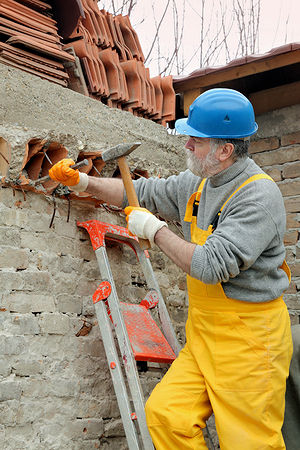Risk Factors Inherent in the Worker
Each worker's ability to respond to external demands of a task is different and unique. Studies show that stereotyping or making general assumptions about an employee's ability based on any one of the factors listed below is not correct. The studies described below emphasize the fact that you can't group workers into general categories. Everyone is unique and work needs to be designed to match each employee's unique abilities. The only way to really know what employees are capable of doing is to interview and evaluate them based on the inherent factors listed below:

Age: By the age of 35, most people have had their first episode of back pain. The prevalence of ergonomic injuries increases as people enter their working years. Musculoskeletal impairments are among the most prevalent and symptomatic health problems of middle and old age. However, remember, don't assume all middle- and old-age workers have the same health problems.
Gender: Whether the gender difference seen in some studies of various MSDs is due to physiological differences or differences in exposure is unclear. One study concluded that the lack of workplace accommodation to the range of workers' height and reach may, in part, account for the apparent gender differences. Again, base your determinations on what the worker is capable of doing, not what gender they are.
Physical activity: Some physical activity may cause injury. However, the lack of physical activity may increase susceptibility to injury. We can define "fitness" as combinations of strength, endurance, flexibility, musculoskeletal timing, and coordination. There is clear evidence that stretching exercises do have a positive effect on the reduction of MSDs.
Strength: A worker's strength is important, but not necessarily the key. "Heavy work" stresses the heart and lungs which may result in rapid fatigue - general or localized. The probability of injury increases as muscles weaken. Consequently, demanding repetitive or static muscular work requires energy, not necessarily strength. You may be strong, but not have sufficient energy to do the task.
Anthropometry: Designing for only the "average" person causes problems for everyone else. Anthropometry is the science of studying the difference in body size and proportions by measuring various body characteristics, including weight, physical range of mobility, and body dimensions. This information is then used by designers to engineer tools, equipment, furniture and workstations for maximum efficiency for each individual worker.
The basic ergonomic strategy is to design work based on each worker's unique abilities and not their membership in a general group. Judgment should not be based solely on any one of the above factors. For instance, don't assume that all "old" workers have the same abilities or ergonomic issues. It is important to design work based on the unique factors inherent in each individual, rather than designing work based on generalities.
Knowledge Check Choose the best answer for the question.
1-2. By what age do most people have their first episode of back pain?
You forgot to answer the question!
